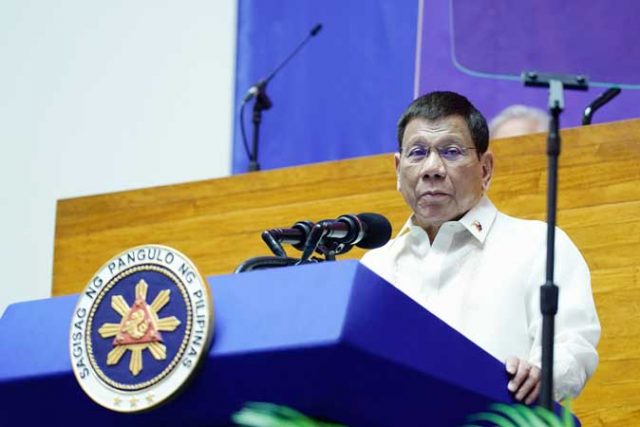Quick rollout, quicker Delta variant
There’s a new game in town. This is going beyond what every country normally aims to tame the coronavirus pandemic. Bloomberg reported the other day that Indonesia ditched herd immunity as whole-of-nation goal. The pandemic continues to surge and circulate “even if everyone in the country gets immunized.”
Indonesia realized that herd immunity at 70% of its population is not robust enough to control the rapid spread of the virus and its new variants. Its target now is to reduce the virus’ reproduction rate to 0.9 by October to trigger the drop in the overall number of infections. Indonesia’s vaccination record is quite good. It administers 2.5 million vaccines per day and given its large population, 8% of its people have already been fully jabbed.
In addition, vaccination has to be supported by regular health protocols on the ground including mask mandates and mobility restrictions.
This problem is not unique to Indonesia.
Many countries are faced with a similar problem. In the case of the US, the estimate is that the herd immunity benchmark has to be upped to 90% to achieve broad protection. This is the new proportion of the US population that should constitute herd immunity rather than the old 70%. This new benchmark has its own built-in sensitivities due to various risks and uncertainty including breakthrough infections, and new and more potent variants. Vaccine hesitancy is no doubt a great handicap, thanks to purveyors of unproven approaches and conspiracy theories.
For Indonesia, herd immunity should be around, believe it or not, 154% if using Sinovac or 128% if Pfizer. Bloomberg calls it “an impossibility.” Herd immunity is possible only at this incredibly high proportion of its population because based on Indonesia’s modelling, Delta’s reproduction rate is 6.5 or for every 10 infected people, some 65 others could in turn be infected.
This continuing upsurge is also felt in Israel, one of the fastest in making it to the old benchmark of herd immunity. Two days ago, it had to reimpose public health measures as new cases hit a high of 4,000 daily. Only vaccinated people are allowed to attend indoor gatherings of 100 people or more and face masks are required again. Traveling into Israel would also require both vaccinated and unvaccinated to complete a two-week quarantine starting next week.
China is also struggling with the Delta variant. A success story in curbing the original virus, China has already decided to lock down key cities, preventing inter-city travels and people from leaving their homes. Aggressive testing is in full swing. Delta has spread to 15 out of 31 provinces and autonomous regions of China. The country’s “containment-based” strategy is now challenged because it could be costly in the long run and Sino vaccines are now claimed to be less effective against the Delta variant.
This new game in town changes the whole dynamics of pandemic management in the Philippines, and the prognosis of economic growth.
First, we might have to target a higher standard of herd immunity. This means we need to inoculate perhaps 10 million more than the old target of 70 million. As of Aug. 3, we were told that we had given one dose to around 12.1 million people and two doses to 9.8 million people at the rate of 700,000 per day. This is less than tenth of our people. Doing the math tells us we need around six months to administer enough doses. This means we can deliver mass protection only by around January 2022, unless the pace gathers more speed.
As the Delta variant stalks the land and more mutations evolve, our health authorities should advise us whether we should go for another 10 million more vaccinations given the increasing reproduction rate of the virus. Needless to say, we need money to keep the vaccines coming in for sustained administration. Any slippage could reduce the daily rate and the number of people to be vaccinated. We might find ourselves farther away from our indicative target of January 2022.
Second, we need good specific direction from the health authorities as to what kind of additional supportive measures we should be doing — keeping our masks and shields on, restricting our mobility, prohibiting large gathering, and lengthening the curfew hours. If people don’t want to get the jab, they must have the swab. Indonesia’s experience is very telling. Even 100% vaccination may not be enough. A third dose, or a booster is crucial to gain more effective protection.
Third, our health authorities should immediately transcend their slow-burn standard but absolutely necessary prevent-detect-isolate-treat-reintegrate strategies. But it is most disappointing to read the recent news the other day quoting the Contact Tracing Czar, Baguio City Mayor Benjamin Magalong, announcing that “all COVID-19 data in the Philippines, including vaccination records and contact tracing information all over the country, will be collected and analyzed by a national digital warehouse to make decision-making more efficient amid the threat of the more transmissible Delta variant.”
As we wrote in another column, a digital data warehouse on the pandemic is to be launched after a year and a half into the pandemic?
We need something more than intent, we need to see a fast and furious response to the pandemic. A sense of utmost urgency is healthy. True to its name, the Delta variant is no joke; it could spell change, not for better, but for worse.
Which is why not too long ago, we raised some reservations against the decision of the Development Budget Coordination Committee (DBCC) to keep its current growth targets of 6-7% for 2021 and 7-9% for 2022 which are premised on “gradual and safe” reopening of the economy, more widespread rollout of the vaccines, and expansion of health capacity on the health side; and infrastructure on the domestic demand side.
The Delta factor is obviously the elephant in the room. Our weak pandemic mitigation system could blindside us to believe that it does not exist. If our monitoring system is far from robust, we are not surprised even our own health authorities continue to maintain that Delta community transmission is yet to be detected. It is good that even this late, we have decided to go into the much-dreaded ECQ (the strictest level of quarantine) to help break the cycle. We are also encouraged that we are increasing the rate of vaccine rollout. But a potential handicap is vaccine hesitancy which could thwart a more pervasive reach of the vaccines. How we respond to the Delta factor is our glass ceiling.
Our growth assumption is therefore too optimistic. It did not seem to factor in the amazing speed of Delta transmission. With the new and higher standard of herd immunity, the original target of inoculation and its cost would have to be recast. Our own Department of Agriculture was the first to realize the need to lower its own forecast from 2.5 to 2% for the industry due to health challenges. International and regional financial institutions have downgraded their growth forecasts for the Philippines, ostensibly driven by our weak pandemic response and its economic and social scars. Credit rating agencies have raised doubt whether we could keep our growth projections. One of them brought down our outlook from stable to negative.
We cannot agree more with Central Bank Governor Ben Diokno who admitted yesterday in his press statement that “…the country’s road to recovery will not be easy.”
An Olympic race has now begun between the Delta variant which is firing on all cylinders and on override, and our souped-up vaccine rollout.
Diwa C. Guinigundo is the former Deputy Governor for the Monetary and Economics Sector, the Bangko Sentral ng Pilipinas (BSP). He served the BSP for 41 years. In 2001-2003, he was Alternate Executive Director at the International Monetary Fund in Washington, DC. He is the senior pastor of the Fullness of Christ International Ministries in Mandaluyong.















